Brokers have been surprised by the huge number of fixtures reported, detrimental to the market’s performance. The Continent appears steady for Handies. Scrap charterers took 30,000 dwt tonnage at US$11,000 daily to the East Med, grain charterers were rating 35,000 dwt tonnage at US$ 9,500 daily to cover Rouen/Algeria. A similar rate this size of vessel should be worth for a trip to the US Gulf.
The Black Sea remains dispiriting with grain charterers trying to undercut last-done fixtures. From West Africa, Chinese log charterers keep searching for logger types and even Supramax tonnage to carry logs to China at levels around US$ 12-13,000 daily for 36-38,000 dwt tonnage and around US$ 13-14,000 for Supramax tonnage, respectively. The ECSA trade region has been slow with coastal charterers trading a 34,000 dwt vessel at around US$ 9,500 daily for 2 laden legs. The US Gulf remains disappointing for Handysize owners whilst the larger sizes keep thriving, with a 52,000 dwt taken for an inter-Caribbean employment at US$ 13,750 daily, and a similar size was fixed to Japan at a very good US$ 19,000 daily. Another 57,000 dwt was taken for a trip to the Med at US$ 15,500 daily. Handysize tonnage has been offered at just below US$ 30/mt for a grain cargo to Pisco, Peru, which looks very high in comparison with a rate of US$ 26/mt that was indicated for a 30,000mt cargo from Montreal to WCCA, which according to shipbrokers equates to something around US$ 12,500 daily. South African brokers have been talking of a fairly quiet week with Supramax rates to India hovering at around US$ 12,250 daily plus US$ 235,000 BB. An Ultramax vessel was done to China at an APS rate of US$ 13,500 daily plus US$ 350,000 BB. An okay rate of US$ 11,750 daily was conceded to owners of a 57,000 dwt Dolphin type vessel for a Mombasa round voyage with delivery and redelivery Richards Bay. Just recently an Ultramax was taken for a trip to the US Gulf at US$ 10,500 daily. Handysize charterers, who have been actively fishing for Handysize rates for a trip to the East, were told about the rather punchy freight of US$ 14,000 daily by the owners of a 36,000 dwt vessel.
The East has been suspiciously quiet, which either means that charterers are taking a breather and plan to return to the market next week or that the market is changing direction. Salt charterers have been rating a high consumer 35,000 dwt at US$ 8,500 daily for an Australian round voyage with delivery Singapore.
Would you like to read our shipbroker viewpoint every morning?
Subscribe to the BMTI DAILY REPORT today.

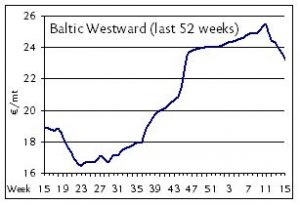 The holiday hangover has lingered over the
The holiday hangover has lingered over the 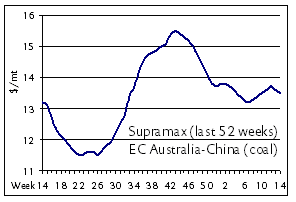 Losses have been rather substantial in the eastern Handy bulk trades in the past week as the monthly switchover and widespread holidays gave charterers all the excuse they needed to get rates reduced toward their preferences. In the event, Supra NoPac rounds lost US$ 500 week-on-week to settle in the lower US$ 11,000s after trading high US$ 11,000s just a week earlier. Indonesia rounds, meanwhile, shed some US$ 300-500 over the week, putting the South China delivery and redelivery round in the high US$ 10,000s of about US$ 10,750 daily on tonnage of 58,000 dwt. Period chartering has been done, though intermittently, with short periods of six months getting US$ 13,000 daily on Handymax tonnage of 54-56,000 dwt from Southeast Asia.
Losses have been rather substantial in the eastern Handy bulk trades in the past week as the monthly switchover and widespread holidays gave charterers all the excuse they needed to get rates reduced toward their preferences. In the event, Supra NoPac rounds lost US$ 500 week-on-week to settle in the lower US$ 11,000s after trading high US$ 11,000s just a week earlier. Indonesia rounds, meanwhile, shed some US$ 300-500 over the week, putting the South China delivery and redelivery round in the high US$ 10,000s of about US$ 10,750 daily on tonnage of 58,000 dwt. Period chartering has been done, though intermittently, with short periods of six months getting US$ 13,000 daily on Handymax tonnage of 54-56,000 dwt from Southeast Asia.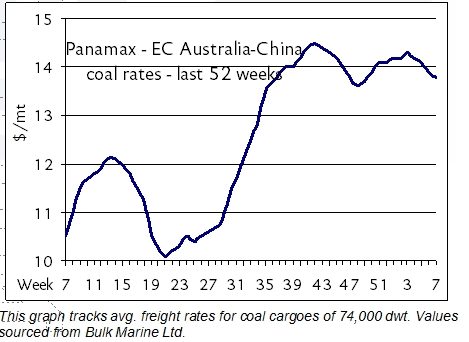 The Panamax freight rates since last week are on the start to continue on their southbound trail but with low demand of grains from Chinese buyers.
The Panamax freight rates since last week are on the start to continue on their southbound trail but with low demand of grains from Chinese buyers.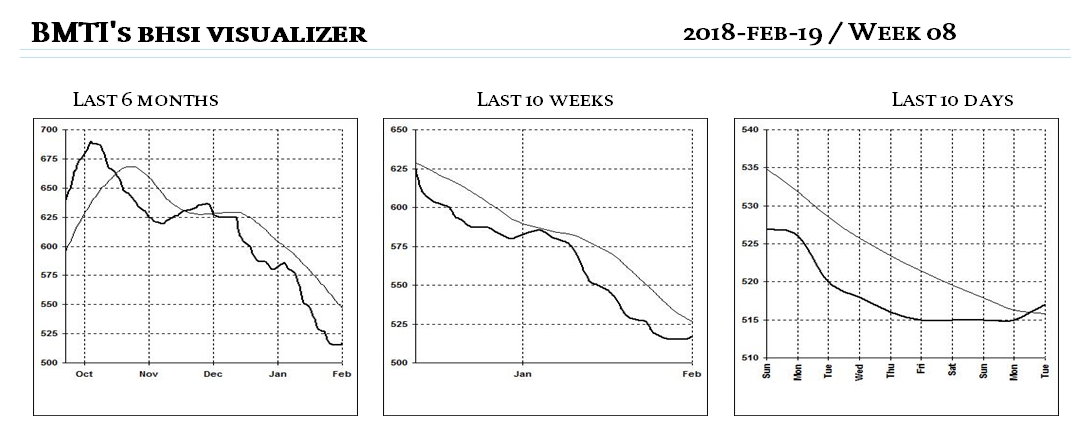
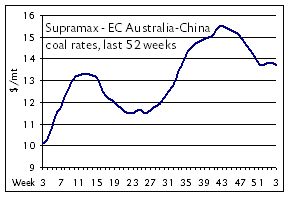 Slowly but surely activity has been creeping up in the eastern basin in recent days with owners seeing more room for securing better rates even as prevailing trends remain flat. Indonesia-based business has also gained momentum with S. China delivery to ECI now getting middle US$ 8,000s via Indonesia instead of the low US$ 8,000s range typical a week earlier. Rates for NoPac rounds have not changed significantly since the year began with owners still settling for just over US$ 8,000 in most cases. Back haul rates to the Continent are set to start increasing. Brokers report that Handysizes have been seeing more enquiry of late, which comes as some encouragement for owners who nonetheless have been settling for last-done rates since the start of the year. SE Asia trips to NoPac via W. Australia have been fixed up to US$ 7,500 daily on 28,000 dwt ships, owners say, with some seeking US$7,750. A 32,000 dwt vessel has done US$ 8,250 ex-CJK to N.China.
Slowly but surely activity has been creeping up in the eastern basin in recent days with owners seeing more room for securing better rates even as prevailing trends remain flat. Indonesia-based business has also gained momentum with S. China delivery to ECI now getting middle US$ 8,000s via Indonesia instead of the low US$ 8,000s range typical a week earlier. Rates for NoPac rounds have not changed significantly since the year began with owners still settling for just over US$ 8,000 in most cases. Back haul rates to the Continent are set to start increasing. Brokers report that Handysizes have been seeing more enquiry of late, which comes as some encouragement for owners who nonetheless have been settling for last-done rates since the start of the year. SE Asia trips to NoPac via W. Australia have been fixed up to US$ 7,500 daily on 28,000 dwt ships, owners say, with some seeking US$7,750. A 32,000 dwt vessel has done US$ 8,250 ex-CJK to N.China.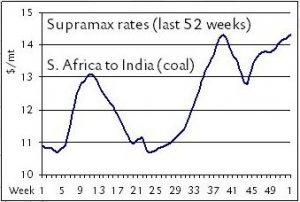 Considerably more
Considerably more 